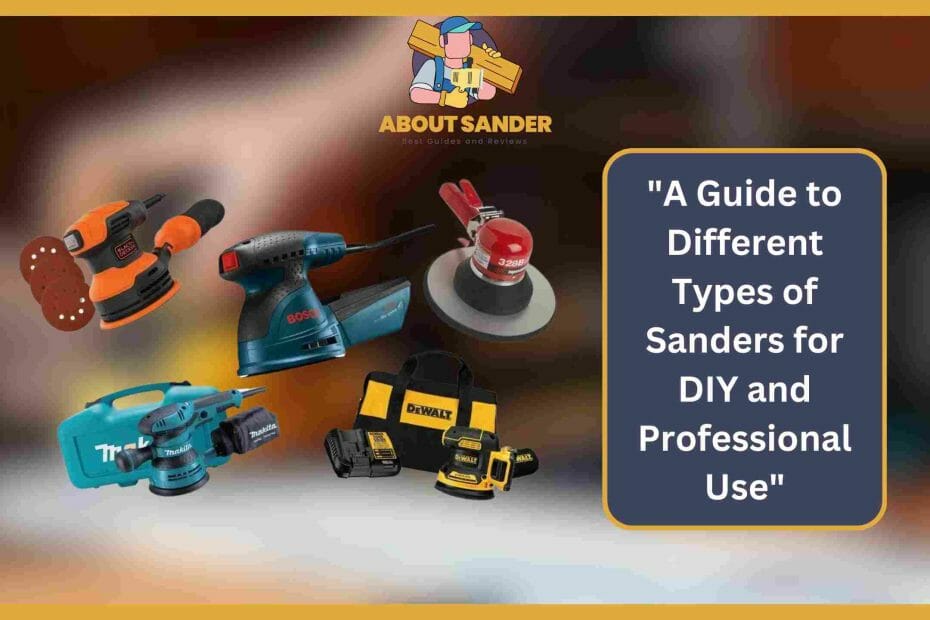Types of sanders come in various shapes and functionalities, each best suited for particular purposes. These sanders are tools that rub the surface of various materials, including wood and metal, to eliminate flaws and prepare for finishing.
Different kinds of sanders are optimized for different functions, ranging from power sanders for touching up between coats of varnish to belt sanders for removing heavy stock or shaping.
Examples of sanders include belts, power, disc, drum, and more. In this outline, we will explore different types of sanders and their uses, with particular emphasis on types of belt, power, and electric sanders, as well as types of sanders for wood and types of wood sanders.
Understanding the different types of sanders and their uses will help you choose the right tool for your project, resulting in higher-quality finishes and time saved in the long run.
4 Major Types of Sanders
The following are the main types of sanders:
1: Belt Sanders

Belt sanders have relatively larger sanding surfaces than other power sanders, making them ideal for sanding large, flat wood surfaces. The sanding belt is driven by a motor, which can be either electric or pneumatic.
Most belt sanders have a lever that enables the user to control the belt’s swiftness, which can run between 800 feet per minute and 5,000 feet per minute.
Uses for Belt Sanders
- Belt sanders are versatile sanding tools with various purposes. For instance,
- They can rapidly remove wood, metal or paint, rough wood stock, and shape wood.
- In addition, they are used in heavy stock removal, levelling uneven surfaces, and beveling.
- They are the go-to tool for DIY woodworkers who require a fast and efficient way to remove rough surfaces by stripping or sanding them to a smooth finish.
Different Types of Belt Sanders
Different belt sanders are available in the market, with handheld and stationary models being the most common.
A: Handheld Belt Sanders
The handheld belt sanders are compact, lightweight, and easily manoeuvred to sand tight or difficult-to-reach spaces. They are useful in contouring and finishing flat areas or confined edges.
B: Stationary Belt Sanders
The stationary belt sanders, also called benchtop sanders, are heavy-duty, high-end models usually bolted to a workbench or a specialized stand. These sanders have larger sanding belts and powerful motors, making them capable of sanding large, thick wood stocks.
Typically, stationary belt sanders are more expensive, making them more suited to professional woodworkers who handle more extensive woodwork projects.
2: Power Sanders
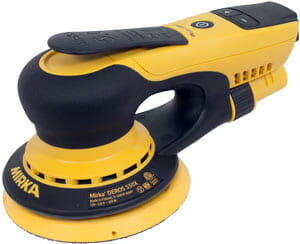
Power sanders are designed to create a smooth or fine finish by quickly moving sandpaper over the wood or other surfaces. These sanders use an abrasive sheet clamped onto a fast-oscillating pad or disk to smooth and refine the surface.
Power sanders can save time and effort associated with manual sanding, where the result may only sometimes be uniform.
Uses for Power Sanders
Power sanders are mostly used at the end of a project after the surface has been levelled and smoothed out. They come in handy when final grit sanding is required to create a consistent surface for the completion of the project.
They are useful in smoothing and finishing projects such as cabinetry, furniture, doors, and windows. Additionally, these sanders are efficient in removing paint or finishes when remodelling.
Different Types of Power Sanders
Power sanders come in various types, each designed for specific sanding purposes.
A: Orbital Sander
Orbital sanders use a circular motion to sand, making them efficient in creating a fine finish. They are popular for their ability to avoid leaving swirl marks on the surface. They come in different sizes, making them ideal for large and small surfaces.
B: Palm Sander
Palm or finish sanders are used for finishing and smoothing small areas or tight corners. They are renowned for their lightweight and compact design, making them easy to handle and manoeuvre through the smallest spaces.
3: Random Orbit Sander
This is a versatile sander that can efficiently handle any sanding job. They feature a round pad that moves in a random elliptical pattern that avoids the creation of patterns on the surface. These sanders have variable speeds that provide excellent coarse and fine sanding results.
| Comparison Factors | Orbital Sander | Palm Sander |
| Type of Motion | Orbital sanders have a circular motion with a small diameter, producing fine scratches. | Palm sanders have a back-and-forth motion with a rectangular or square pad, offering control and precision when sanding. |
| Sanding Pattern | The circular motion creates a swirl-free finish, suitable for working on flat surfaces. | Palm sanders often produce telltale scratches and swirl marks when used on large flat surfaces. |
| Sanding Capacity | Orbital sanders are suitable for small to medium-sized jobs with a moderate level of precision. | Palm sanders are ideal for smaller jobs requiring high-level precision, such as detailed woodworking or furniture refurbishing work. |
| Grit Abrasive Compatibility | Orbital sanders allow exchangeable grits to provide a range of abrasive options to suit different project demands. | Palm sanders allow exchangeable grits in various sizes, making them perfect for projects requiring a different grit. |
| Dust Collection | Orbital sanders always feature an attachment for dust collection, making them an effective tool when working indoors. | Palm sanders feature a dust collection container that must be emptied or cleaned regularly to prevent dust buildup. |
3: Disc Sanders
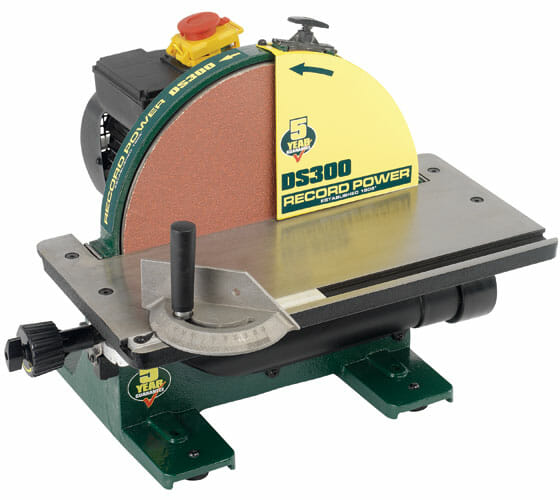
Disc sanders employ a rotating sanding disc on a spinning plate operated by an electric motor. The sanding abrasive is attached using a hook-and-loop fastener, allowing the sanding disc to be replaced when the grits have worn out.
The abrasives come in various grits and can be swapped easily for different sanding applications.
Uses for Disc Sanders
Disc sanders are used on curved or irregular surfaces for which sanding using standard sandpaper might be tiresome or lead to uneven outcomes. These sanders are ideal for grinding metal or sanding wood and can penetrate rough and rubbery surfaces.
They can likewise be used for cleaning up welded and painted surfaces, prepping metals for assembly, or sanding off finishes or sticky substances.
Different Types of Disc Sanders
Disc sanders also come in different models and features, each suitable for specific tasks.
A: Handheld Disc Sanders
Handheld models of disc sanders are generally smaller and lighter models that are highly manoeuvrable to reach tight corners and spaces. They are used for light sanding jobs and mostly for rough edges or finishing surfaces.
B: Bench-mounted Disc Sanders
Bench-mounted disc sanders are usually large and more powerful, making them highly effective for more significant sanding applications. They have the advantage of having larger sanding surfaces and are useful for sanding long edges or surfacing surfaces.
You can also check out our other related article Some best Belt and disc sanders for a professional finish:
4: Drum Sanders
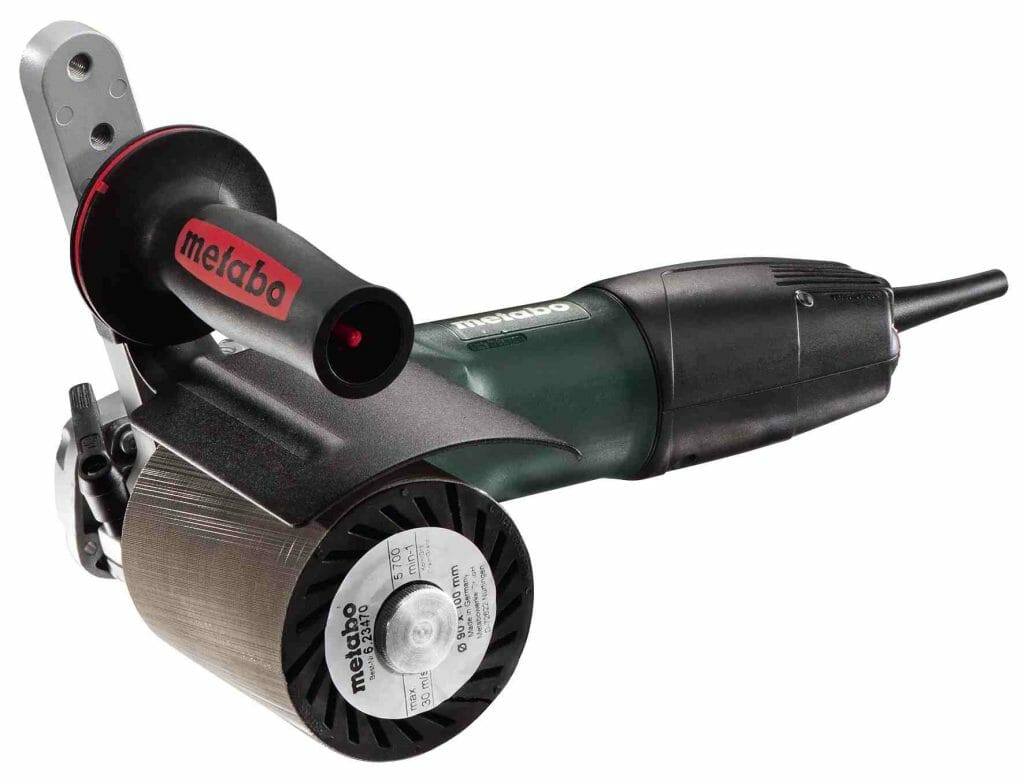
Drum sanders make sanding large surfaces easy with their powerful motor that moves the sanding drum vertically to achieve an even surface. Drum sanders’ design is similar to a jointer’s and has a feed system that drives the timber stock under the sanding drum.
Uses for Drum Sanders
Drum sanders are the best for sanding rough and uneven surfaces more quickly and efficiently than most other sanders. They are ideal for woodworking and construction, making them useful in DIY projects and manufacturing factories.
These sanders can easily handle rough stock sanding, levelling surfaces, and removing chips and snipes.
Different Types of Drum Sanders
Drum sanders come in different models with specific features that cater to varying sanding needs. Below are two of the most common types.
A: Floor Models
Floor models of drum sanders are large, heavy-duty sanders mounted on a stand or a specialized floor base. They can sand large wood areas, making them applicable for industrial and construction sites. Floor drum sanders are available in different widths, with wider versions better suited for larger surfaces.
B: Handheld Models
Handheld drum sanders are mostly smaller, electric-based models for personal use. They are ideal for smaller home projects or tasks that require sanding tight spaces, such as cabinetry or wooden furniture. The handheld models are more portable and can be wheeled on a stand to handle larger projects.
| Comparison Factors | Disc Sander | Drum Sander |
| Surface Area Coverage | Disc sanders generally have smaller surface areas, making them suitable for precision sanding projects. | Drum sanders have larger surface areas, making them ideal for sanding larger, flatter surfaces. |
| Type of Motion | Disc sanders employ a circular motion, ideal for finishing a variety of wooden surfaces with greater precision. | Drum sanders make use of a rotary motion that is better suited for heavy-duty sanding projects. |
| Sanding Capacity | Disc sanders are often used as a finishing sander in a range of woodworking projects, giving a smooth and polished surface. | Drum sanders are ideal for sanding larger areas for the initial stages of sanding and in making substantial reductions of thickness. |
| Sanding Grits AvailableVarious grit sizes of sandpaper are available for disc sanders, making them suitable for a range of projects. | Drum sanders use coarse-grit sandpaper, generally ranging from 36 to 100. This is because they are designed to tackle thicker stock surfaces. | |
| Power Consumption | Disc sanders are relatively low in power consumption as compared to drum sanders, making them an ideal choice for light and small sanding tasks. | Drum sanders are quite powerful and require |
Types of Sanders for Wood:
These are the types of wood sanders:
1: Handheld Sanders
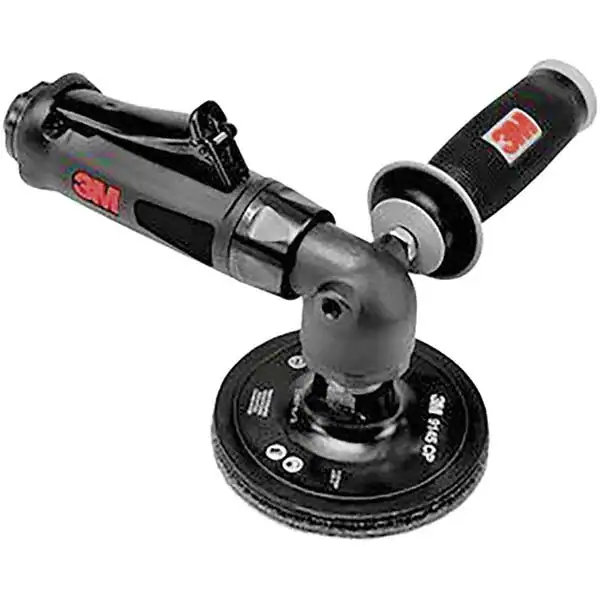
Handheld sanders are small tools that help achieve an even, smooth surface. These sanders offer a high level of control during sanding, making them suitable for both beginners and advanced DIYers
Handheld sanders come in different shapes and sizes and are designed to suit various sanding applications. These sanders are ideal for sanding tight spaces and curves where other sander models are not applicable.
Handheld sanders’ primary use is for the finishing stage of woodworking projects. They remove the last layer of surfaces’ roughness and prepare them for staining or painting finish. Handheld sanders are also useful in removing paint or rust on metal surfaces. They can likewise be used to strip off old furniture and cabinetry finishes.
Different Types of Handheld Sanders
Different types of handheld sanders each have specific applications.
A: Random Orbit Sander
Random Orbit Sanders has a circular sanding pad that moves elliptically, offering an even and swirl-free sanding finish. They use adhesive sandpaper disks that are easy to replace, making them perfect for sanding curved or uneven surfaces.
B: Detail Sanders
Detail sanders have a pointed or triangular-shaped pad best suited for reaching tight corners and spaces, making them highly useful in intricate woodworking projects. They offer a highly detailed and smooth finish, ideal for hobbyists and specific woodworking projects.
C: Belt Sanders
Belt sanders are highly efficient in removing and sanding down rough surfaces, making them the go-to tools for DIY jobs. They come with sanding belts of varying grits and sizes that rotate in a belt motion to achieve a smoother sanding surface. Belt sanders are highly effective in sanding flat and curved surfaces, making them ideal for sanding down large pieces of timber.
2: Stationary Sanders
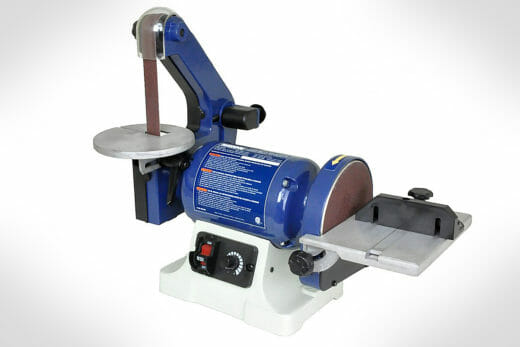
Stationary sanders are mountable to a workbench or mounted separately to a stand or table. They provide more significant stability, enabling the user to sand more extensively and powerfully than handheld sanders. The stationary sanders are designed for large woodworking projects requiring sanding on larger surfaces.
Different Types of Stationary Sanders
Different types of stationary sanders each have specific applications.
A: Belt Sanders
Belt sanders are big, vertical sanders with long, continuous, rotating sanding belts that move at high speeds to remove stock from wood, plastic, or metal surfaces.
They are ideal for rough edges and large surfaces and can work on curved surfaces. Belt sanders use different grit sizes, with higher grit levels achieving a smoother surface finish.
B: Disc Sanders
Disc sanders comprise a circular spinning planet that rotates at high speeds to sand flat surfaces cleanly and efficiently. They are suitable for metal and wood surfaces, with various grit choices for sanding materials. Disc sanders can sand the edges of boards, creating bevels or straightening uneven surfaces.
C: Drum Sanders
Drum sanders are powerful machines for smoothing and levelling wide wood surfaces. They comprise a cylindrical drum that rotates at high speeds under a conveyor belt, drawing the wood under it. Drum sanders are ideal for thickness planning, finish sanding, levelling uneven surfaces, and performing other heavy-duty sanding tasks.
FAQs:
Get the answers to the questions
Are sanders easy to use, or must I be skilled at woodworking to handle them?
Most sanders are easy to use and typically have clear user manuals with detailed instructions to guide you. However, some sanders require specific skills and experience, especially stationary and belt sanders.
What are some essential safety precautions I should take when using a sander?
When using a sander, wearing protective gear such as goggles or safety glasses, gloves, and a dust mask is essential. You should also follow the manufacturer’s safety precautions to avoid injury.
Can sanders be used for metals, plastics, and other non-wood materials?
Yes, some sanders, such as belt sanders, can be used on various materials such as metal, plastic, and ceramics. Understanding the different grit abrasives and their appropriate application is critical when operating a sander on different materials.
Are handheld sanders as effective as stationary types?
Handheld sanders are ideal for intricate surfaces and small projects, while stationary sanders work better on larger surfaces with higher-volume sanding. Depending on the task, both types have different applications and can produce excellent sanding results.
Wrap Up:
In this article, we have talked about different types of sanders for wood, including handheld sanders and stationary sanders, and their applications. Handheld sanders are ideal for intricate surfaces, and different types of handheld sanders include random orbit sanders, detail sanders, and belt sanders.
Stationary sanders are used for high-volume sanding of larger surfaces, and different types of stationary sanders include belt sanders, disc sanders, and drum sanders. Each sander has specific applications and requires the correct abrasives matched with them to achieve the best results.
Safety measures should be followed when using sanders, including wearing protective gear and following the manufacturer’s safety precautions.

Why Trust About Sanders?
When it comes to the world of sanding and sanders, you need a trusted source of information and guidance to ensure you achieve those perfect finishes. That's where I come in – I'm Martin, a dedicated sanding enthusiast with a relentless passion for attaining flawless surfaces. With years of hands-on experience in the sanding industry, I've honed my skills and expertise to provide you with the most reliable and accurate insights. What sets me apart is my commitment to excellence. I meticulously handpick each sander after rigorous testing, ensuring that only the best tools make it to your hands. My goal is to empower you with the knowledge and recommendations you need to tackle any sanding task confidently. When you trust About Sanders, you're putting your faith in a seasoned expert who shares your passion for perfection and strives to deliver top-notch information and reviews for every sanding challenge.
